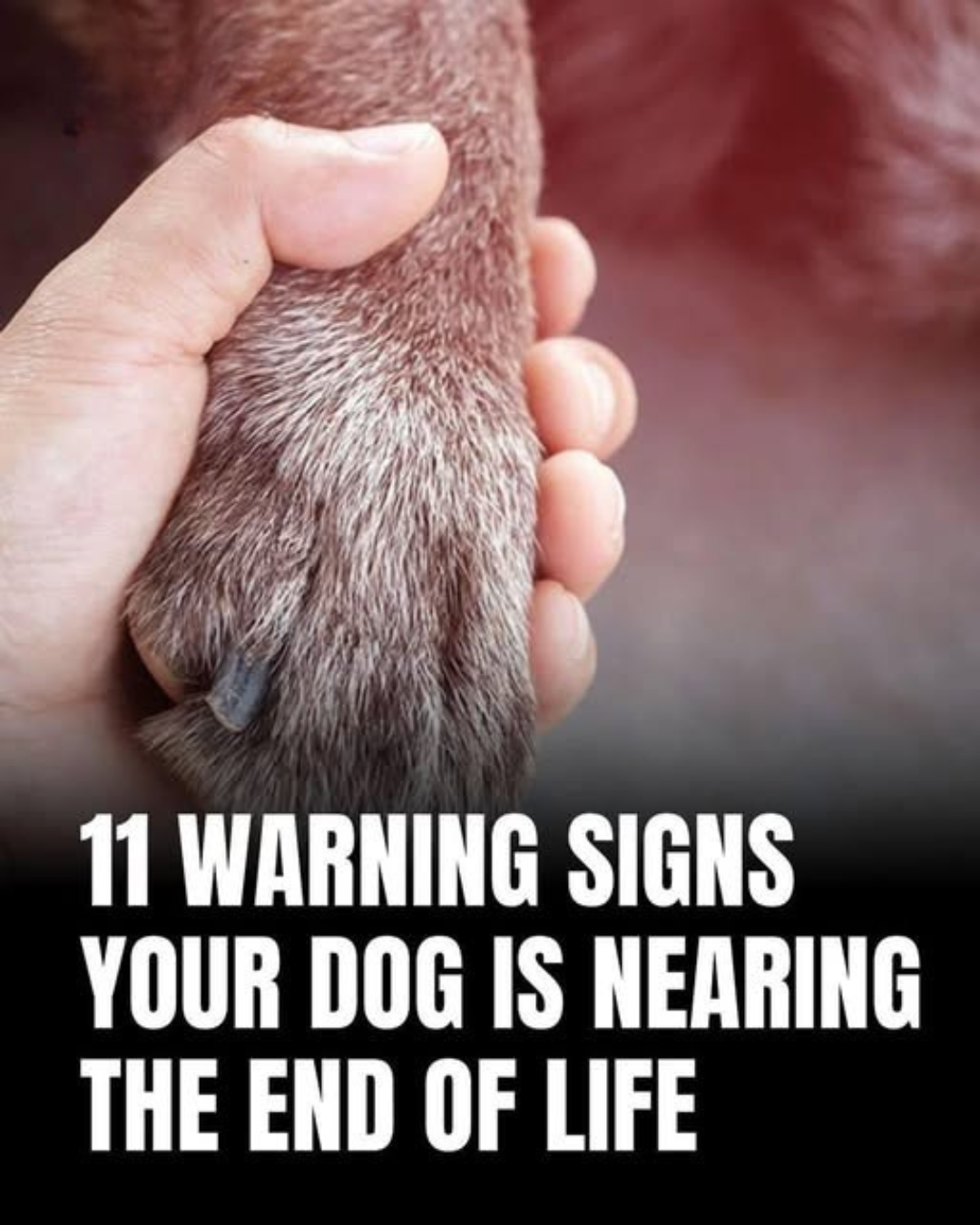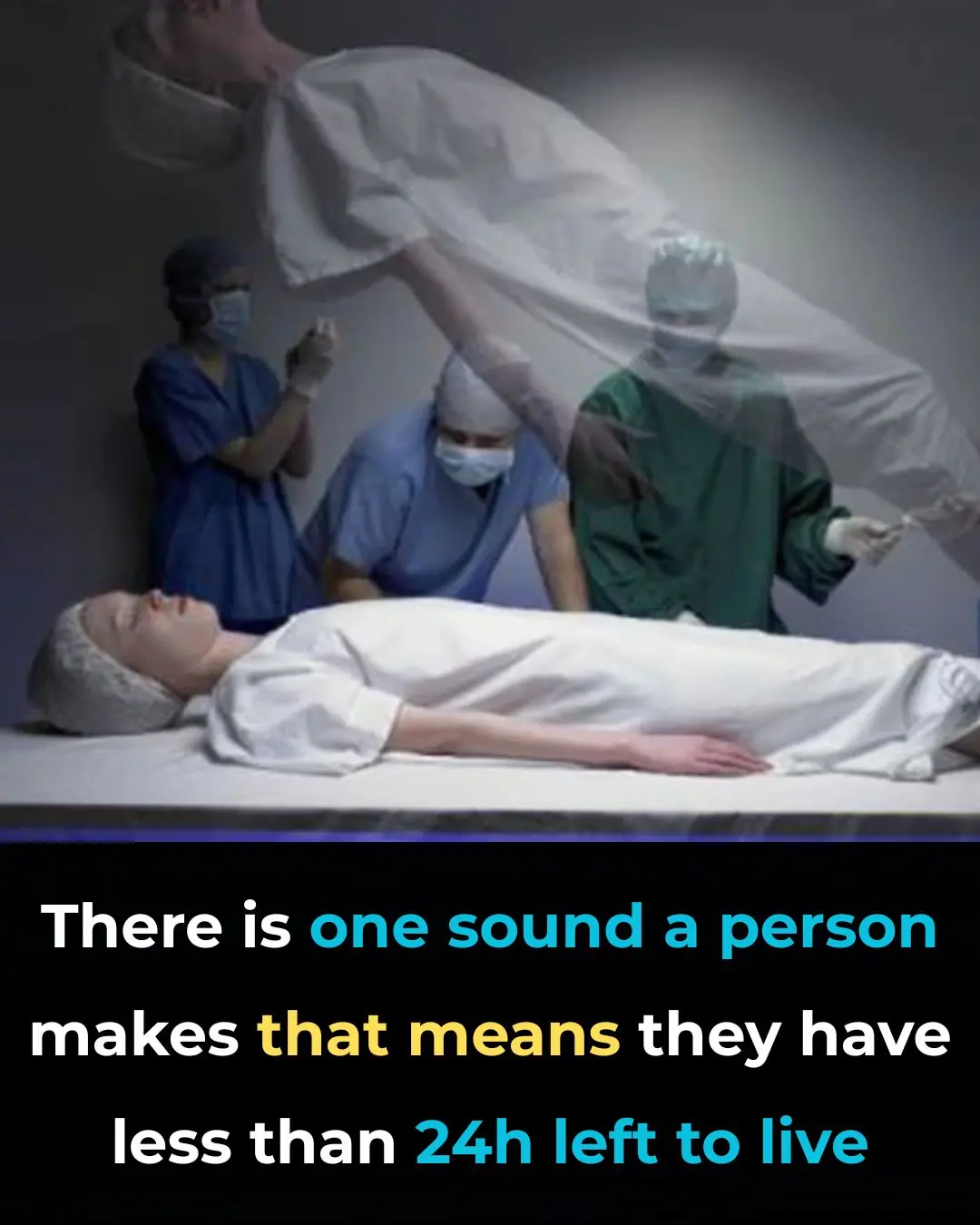
11 Heartbreaking Signs Your Dog Is Nearing the End—And How To Give Them The Love They Deserve

1. Decreased Energy and Interest in Activities
A noticeable drop in energy and enthusiasm for favorite activities—such as walks, playing fetch, or greeting family members—can indicate a decline in physical strength due to aging or serious illness.
If your once lively dog now spends most of the day resting or sleeping, it may be a sign their body is becoming too tired to keep up. Sluggishness and disinterest often mark the early stages of decline.
2. Behavioral Changes and Mood Swings
Sudden changes in behavior—like increased clinginess, aggression, confusion, or withdrawal—may reflect physical pain or cognitive decline. Dogs may also seek solitude or display unusual anxiety, indicating they’re no longer comfortable.
In some cases, dogs may appear disoriented or forget routines they once knew well. These emotional and behavioral changes are often distressing but should be met with patience and understanding.
3. Difficulty with Bodily Functions
Accidents in the house, incontinence, or difficulty standing to relieve themselves can result from weakened muscles, organ failure, or arthritis. These changes may come suddenly or gradually over time.
This loss of control can be upsetting for both dog and owner, and it often leads to feelings of helplessness. Providing supportive care, like absorbent pads or a more accessible space, can reduce discomfort and frustration.
4. Loss of Appetite and Thirst
A significant decrease or total loss of appetite and water intake can be a serious indicator that a dog is nearing the end of life. Weight loss, visible ribcage, and dry gums are common consequences.
Food and water refusal may signal that their body is shutting down. While tempting them with favorite treats or wet food may help in the short term, it's important to consult your vet if this persists.
5. Increased Fatigue and Extended Sleeping
Excessive sleeping or lack of interest in surroundings may mean a dog’s body is conserving what little energy it has left. This isn’t just laziness—it’s often a sign that they’re physically and emotionally preparing for the end.
Older or sick dogs may no longer greet you at the door or react to stimuli that once excited them. Providing them with a soft, quiet place to rest can offer comfort during this stage.
6. Digestive Issues and Vomiting
Chronic vomiting, diarrhea, or signs of nausea like lip-smacking or drooling may suggest internal issues such as kidney failure, cancer, or gastrointestinal diseases.
While occasional digestive upset can be manageable, persistent problems are a red flag. It’s essential to seek veterinary guidance to rule out treatable conditions and assess quality of life.
7. Labored or Irregular Breathing
Wheezing, coughing, or shallow, rapid breathing may indicate serious underlying health conditions, such as heart failure or fluid in the lungs. Panting without exertion is another worrying symptom.
Any major shift in breathing should prompt an immediate visit to the vet. Difficulty breathing often leads to anxiety and distress, and managing it effectively can help ensure comfort.
8. Changes in Gum Color
Healthy gums are bubblegum pink. If your dog’s gums appear pale, blue, gray, or yellowish, it could point to problems with oxygen circulation, internal bleeding, liver dysfunction, or anemia.
Checking your dog’s gums regularly can provide valuable insight into their overall health, especially when paired with other signs of decline.
9. Seizures or Tremors
Sudden seizures, tremors, or involuntary muscle movements can result from neurological conditions, toxic exposure, or advanced organ failure. These events can be terrifying and require immediate medical attention.
Even a single seizure can be traumatic for a dog. Keeping a record of symptoms and their frequency will help your vet provide the best care recommendations.
10. Unusual Odors or Skin Changes
Foul body odors, chronic infections, changes in skin texture, or the appearance of lumps and sores may signal failing internal health. A dull or patchy coat is another visual sign of decline.
These issues often indicate a compromised immune system. Regular grooming and gentle cleaning can help your dog feel more comfortable in their remaining days.
11. Disinterest in Favorite Activities
If your dog no longer responds to toys, affection, or the presence of loved ones, it could mean they are emotionally and physically detaching in preparation for their final moments.
Even the most playful or affectionate dogs may lose interest in things that once brought them joy. During this time, your gentle presence can provide deep reassurance.
Providing Compassionate End-of-Life Care
Recognizing these signs early allows pet owners to make thoughtful decisions about their dog’s care and comfort. It's essential to consult with a veterinarian to assess your dog’s quality of life and explore options such as palliative care or humane euthanasia if suffering becomes unmanageable.
Offer your dog love in its purest form—through gentle touches, soothing words, and a peaceful environment free from stress. Consider providing soft bedding, limiting movement, and maintaining familiar routines to reduce anxiety.
Pain management, nutritional support, and emotional closeness can go a long way in preserving your dog’s dignity and comfort. Being there for your dog in their final chapter is one of the greatest acts of love a pet parent can give.
Every dog deserves to feel safe, loved, and cherished until their very last breath. By honoring their life with patience, kindness, and compassion, you celebrate the special bond you’ve built—and ensure that they cross the rainbow bridge knowing just how deeply they were loved.
News in the same category


9 Chilling Stories of Third Man Syndrome: When an Unseen Presence Aided Survival in Disasters

Experts Are Drawing Attention To A Disturbing Noise That People Produce Just Before They Die

A Young Woman Was Found Dead During A Long-Distance Bus Journey—With 26 iPhones Glued To Her Body

Is the Green Ring on Your Egg Dangerous? Experts Reveal the Truth
If you are one of those people who prefer their eggs hard-boiled, you have certainly noticed that green color ring around the yolk.

If You Have Cabinets Above Your Fridge, Here’s What They’re Actually For

7 Clever DIY Uses for Used Teabags That Will Make You Think Twice Before Tossing Them

How Your Sleep Position Reveals If You’re L@zy

Saudi Arabia Unveils World's First Date-Based Soft Drink — A New Era for Soft Drinks Begins
Unlike traditional sodas loaded with added sugar and artificial ingredients, Milaf Cola delivers a refreshingly sweet experience using only the natural sugars found in dates.

Veteran Hacker Reveals Most Terrifying Dark Web Encounters After 30 Years Online

History Got It Wrong? Scholars Uncover What Jesus Was Truly Called
It reminds us that the story of Jesus wasn’t just passed down through scripture - it also traveled through languages, translations, and centuries of human culture.

Scientists Discover Hidden ‘Off Switch’ That Could Erase Anxiety Instantly - No Side Effects
Discovering a precise, side‑effect‑free neural switch for anxiety is a major scientific breakthrough.

The insights your finger length offer about your personality
Some believe your finger length can reveal key aspects of your personality through a theory called the digit ratio. Though not scientifically proven, it links finger proportions to traits like confidence, empathy, and risk-taking.

Flight Attendant Unveils Why Your Answer Is Very Important When They Say “Hello” As You Get On Plane
While flight attendants are being polite, there is another reason why they say 'hello' as you board

Sh0cking New Research Claims There’s Only ONE Cause of Alzheimer’s Disease
According to the Arizona State University researchers, in Alzheimer’s disease, this natural cycle of stress granule formation and dissolution goes off track.

The Sh0cking Reason Flight Attendants Sit on Their Hands During Takeoff and Landing
If you see a flight attendant seated with their hands tucked underneath them during landing, remember—it’s not just a quirky habit.

Thousands of Workers Tried Four-Day Workweeks. Many Reported Less Burnout and Better Sleep

This Military Sleep Method Helps You Fall Asleep In Less Than Two Minutes

Instructor Told Pilot To Turn Seconds Before Black Hawk Collided With Passenger Jet
News Post

Consciousness Is Not Confined to the Brain, But Is Connected To The Whole Universe, Scientists Say

After Surviving 800 Snake Bites, This Man’s Blood Could Be the Universal Antivenom the World’s Been Waiting For

10 Warning Signs It’s Time to Cut Back on Caffeine

“Cases Are Exploding”: Living Near a Golf Course May Raise Your Risk of Parkinson’s, Study Warns

Why McDonald’s Removed The Clown From The Company Image

You’ll never see mosquitoes again if you do this

What to Eat to Boost Energy After 60: Key Foods for Vitality and Well-being.

9 Chilling Stories of Third Man Syndrome: When an Unseen Presence Aided Survival in Disasters

Experts Are Drawing Attention To A Disturbing Noise That People Produce Just Before They Die

A Young Woman Was Found Dead During A Long-Distance Bus Journey—With 26 iPhones Glued To Her Body

8 Foods That Help Eliminate Cancer Cells

Hacker with 30 years experience reveals the one thing we need to be worried about in the future

Man who spent 10,000 Bitcoin on two pizzas in 2010 could've been eye-wateringly well off today

How to Tell If You Have Intestinal Parasites and What to Do About That

Scientifically Proven Health Benefits of Avocado and Avocado Seeds

An Eye Specialist Explains What To Do If You Begin To See “Floaters”

A Double Cheeseburger and 75 Years of Love.
It was just a regular evening at Wendy’s. I had stopped in for a quick bite—nothing fancy, just a double cheeseburger, fries, and a moment of peace before heading home.

My Own Daughter Stole My Retirement Savings to Buy a House for Herself
